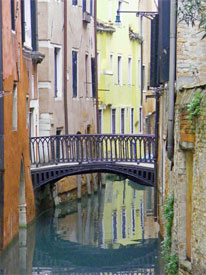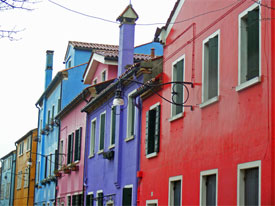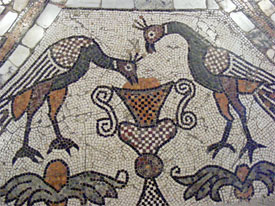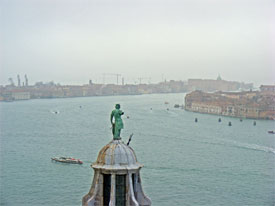
It’s
that catalogue time of year. Or
rather, it’s that time
of year when I desperately
try to keep myself away from
catalogues, for
fear of (1) sinking all my
wordly wealth in seeds and/or
(2) finding
myself with huge piles of seeds
that I will never
ever find time or energy to
plant
and cajole into flourishing
life.
I have no problem
with vegetable catalogues (for which I mostly use
the Organic Gardening
Catalogue):
in this case I manage
to be fairly rigid about
getting just what I
need. Other cases
are more complicated.
I admit, I have
this
year succumbed to a few temptations
on the Thompson & Morgan site – some
cosmos, a little
gaura, some morning
glory to run up my
trees and some sweet peas to run
anywhere I can coax
them to go (my
mother’s
favourite flowers
and an all-pervading
perfume of my youth,
I have so little success with them,
it’s amazing
that I haven’t given up in
despair). Oh dear,
now I peruse this
bundle, I see that
I have bitten off far too much.
There seem to be
hollyhocks here
too: did I ask
for those? And dianthus,
and achillea and,
hmmm, where did these
asters come from? Ah yes,
I remember thinking
that this alyssum
would make a lovely carpet beneath
my
roses, and that I
couldn’t
understand why I never grow
monarda,
a joyous, abundant, life-enhancing
plant.
You see, that’s
the problem with seed
catalogues: it’s
the ‘just one more’ syndrome.
Taken one by one, they seem
(and cost)
so little. Bulbs, wonderful
as they
are, are so much easier to
fend
off. I set up a huge order
on the site of Rose
Cottage Plants but
trashed it after
an hour or so of
voluptuous imaginings:
each bulb
was so expensive,
that the final total
(I did plan
to buy rather
a lot) was outrageous
and easy to discard
without too much
regret.
But seeds – that’s
quite
different. From a tiny pack comes a
garden-bed-full
of blooms. In theory. What often
emerges in my case is absolutely nothing in
neglected
trays in my messy so-called greenhouse.
I have
eyes far bigger than my seed-stomach.
Tomorrow I have
been summoned for lunch
with a client-friend.
She has trawled through
some wonderful catalogue – printed
in her case – and has, she tells
me, circled upwards
of 200 plants that
she just has to have. My
job, she says, is to warn
her that almost none
of them have a snowball’s
hope in hell of growing
in our climes – that
way she can bravely cross them
off her
list without falling prey to
depression.
Will I be stronger-willed than
she has been?
We
have been in Venice again,
for a whole
week this time. We rented
an apartment
right behind the St Mark’s
clock tower – a
spot that in high
season
would be utterly
horrible, with hordes
of grockles blocking
your exit from your
tiny calle. In dark,
dank, foggy, magical
January, however, Venice belongs
to the Venetians
and no one blocks
anyone.
I can’t remember
the last time I entered
St Mark’s basilica
previous to this visit.
Even if
you book
your entry slot at times
(ie most of the year) when
queues are so long that
the idea
of waiting in line
takes away any
desire
to see these acres of heart-stopping
mosaics, you know that
once inside you’re
going to be shoulder-to-shoulder
with the gawping, snapping
mass.
This
is not
the way to see such a marvel.
But last week, I
traipsed over deep
puddles on the high-water
walkways and strode straight
in, to find that
there was a thin
sprinking of other visitors.
This was St Mark’s
as it should be seen.
Much (by which I
mean restaurants
and bars and shops)
is shut at this time
of year, but in and around
what remains open there’s an
intense local life going
on. It’s
going on at other
times too of course:
it’s
just that you can’t see it,
because it’s obscured by visitors.
Campo Santa Margherita
is always a lively
hub, for example,
frequented of an evening by
students and local
oddballs. But I
don’t think
I’d realised quite
how much fun is being
had
in the bacari and
restaurants in the nexus
around
crosera San Pantalon.
I didn’t
realise, either,
how very dispensible
the concentration
(ex-concentration?) of places around
the Rialto markets
was. Perhaps
it’s the victim
of its own success, that
area.
Maybe
most of the components
of the spritz-drinking
horde are out-of-towners
these days. Last
week, with almost everything
there closed, the
area was rattling and
sad, and clearly
not catering to the populace.
On the occasions
when L has tried
to persuade me that
we should be living in
Venice, I have mostly
ignored him; but when
I felt he was seriously
expecting an answer, my
response has always been
the same: it’s just too
urban, too un-green
for someone like me who
needs verdure. In fact,
it isn’t un-green, as any
aerial photo reveals.
It’s
full of hidden gardens
and overgrown courtyards.
But they’re hidden,
that’s the
trouble. It’s
a city that keeps
its greenery behind
high walls, and I
resent that. I have
to admit that there
are times of year
that even the highest
of high walls can’t
contain
that greenery, and in
an explosion
of generosity it bursts
into view,
over and around and through,
and it sends
delightful perfumes along
the calli.
But January isn’t
one of those times,
and this visit confirmed
to me that Venice,
much as I adore every
stone of it, is not
a city where I would
make my home. Even
if I had a garden
there of my own,
I would come to
resent the secrecy
of the city’s
green, including mine.
It comes to something
when relief fills
the green part of
your soul when you zip
up to the top of the campanile
at San Giorgio Maggiore
on a misty damp
day and catch a glimpse
of Randoll Coate’s
rigid Borges
maze in the Fondazione
Cini below: impressive,
but not usually something
that would sooth
my longing for leaves.
While in Venice
we met Jenny Condie, whose book Gardens
of Venice and the Veneto came
out last year. Funnily enough,
she turned out to
be the aunt of one of C’s dearest school
friends, but that’s immaterial.
I mentioned my Venice
reservations to
her; I don’t
recall getting much more
than
a wry smile.
But she then started talking
pointedly about the garden
of her house in Liguria…
CdP
22 January 2014





